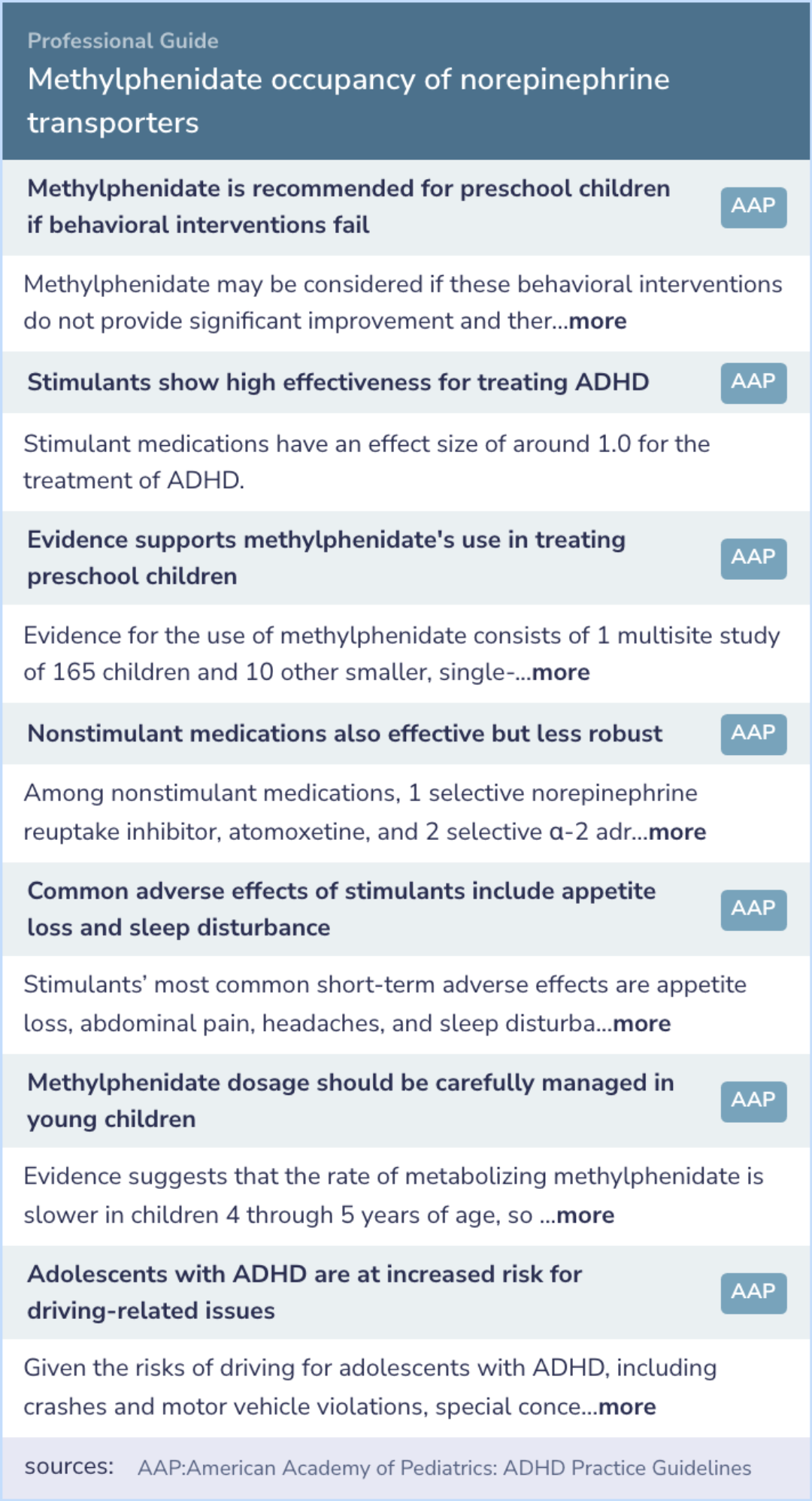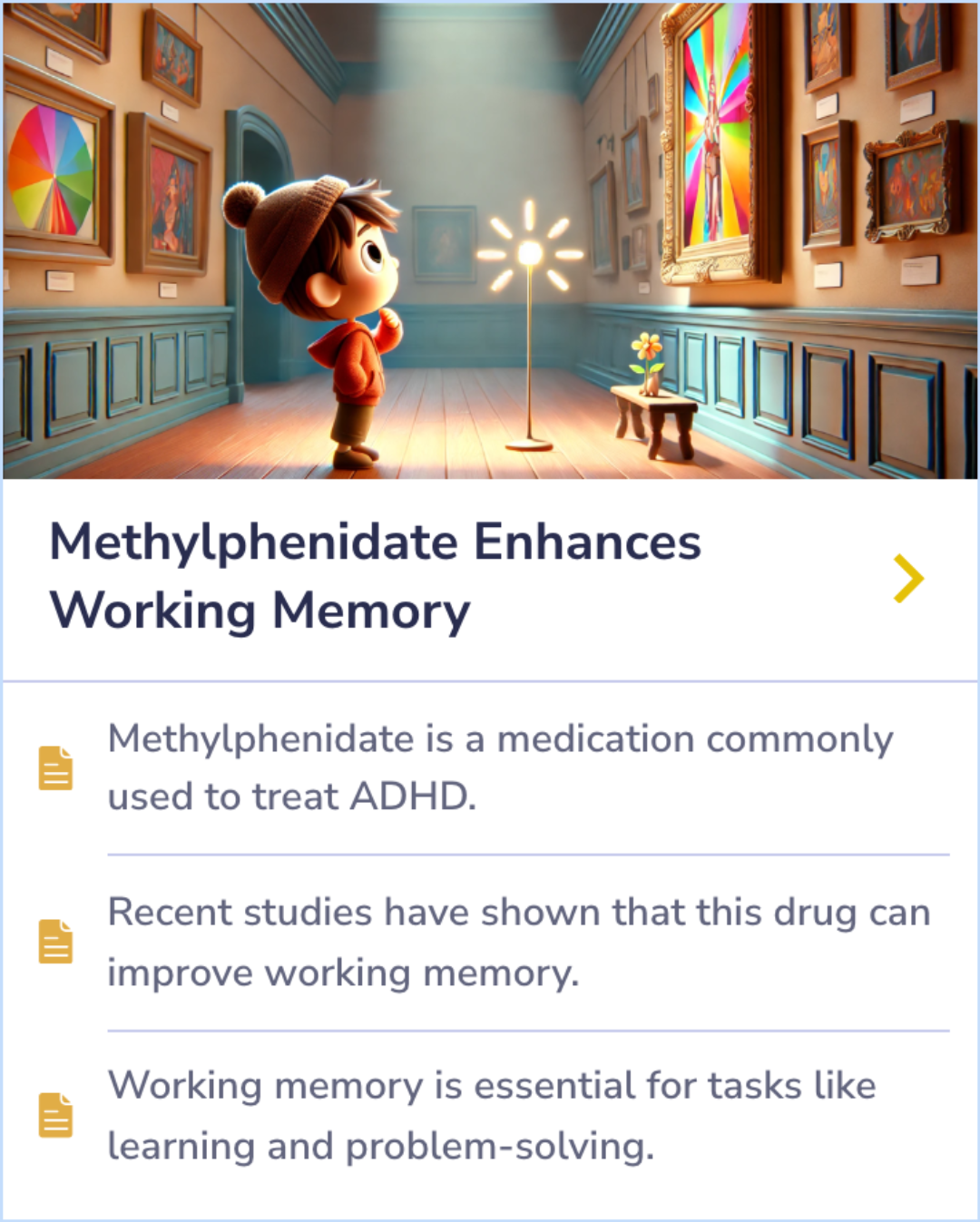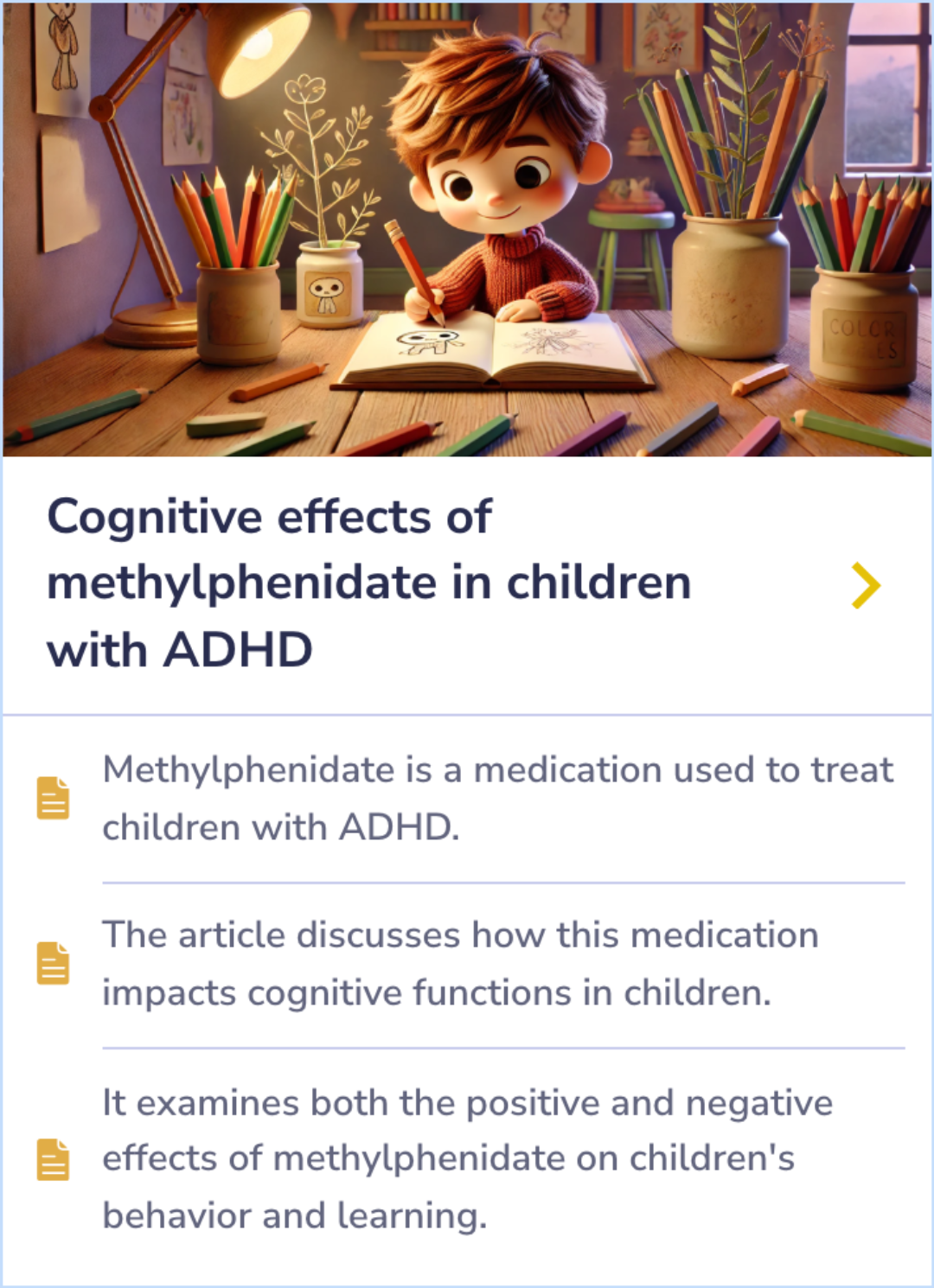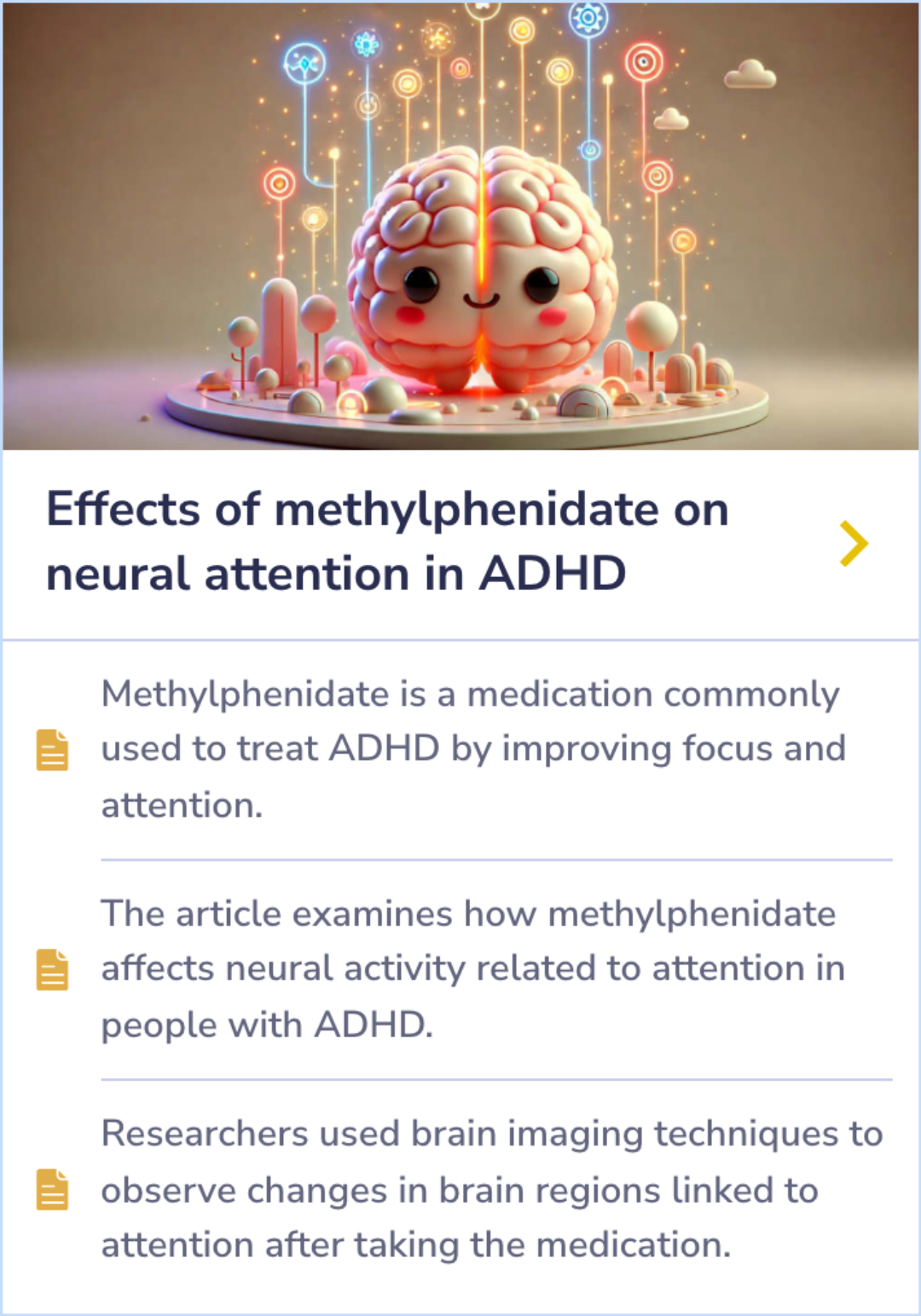Ritalin Paper Database
Visual Abstract
Clinically relevant doses of methylphenidate significantly occupy norepinephrine transporters in humans in vivo
Methylphenidate occupancy of norepinephrine transporters
October 17, 2024
author
Hannestad J, Gallezot JD, Planeta-Wilson B, Lin SF, Williams WA, van Dyck CH, Malison RT, Carson RE, Ding YS
journal
Biol Psychiatry
Date Published
2010 Nov 1
Why link to a visual abstract?
What is a visual abstract?
Original
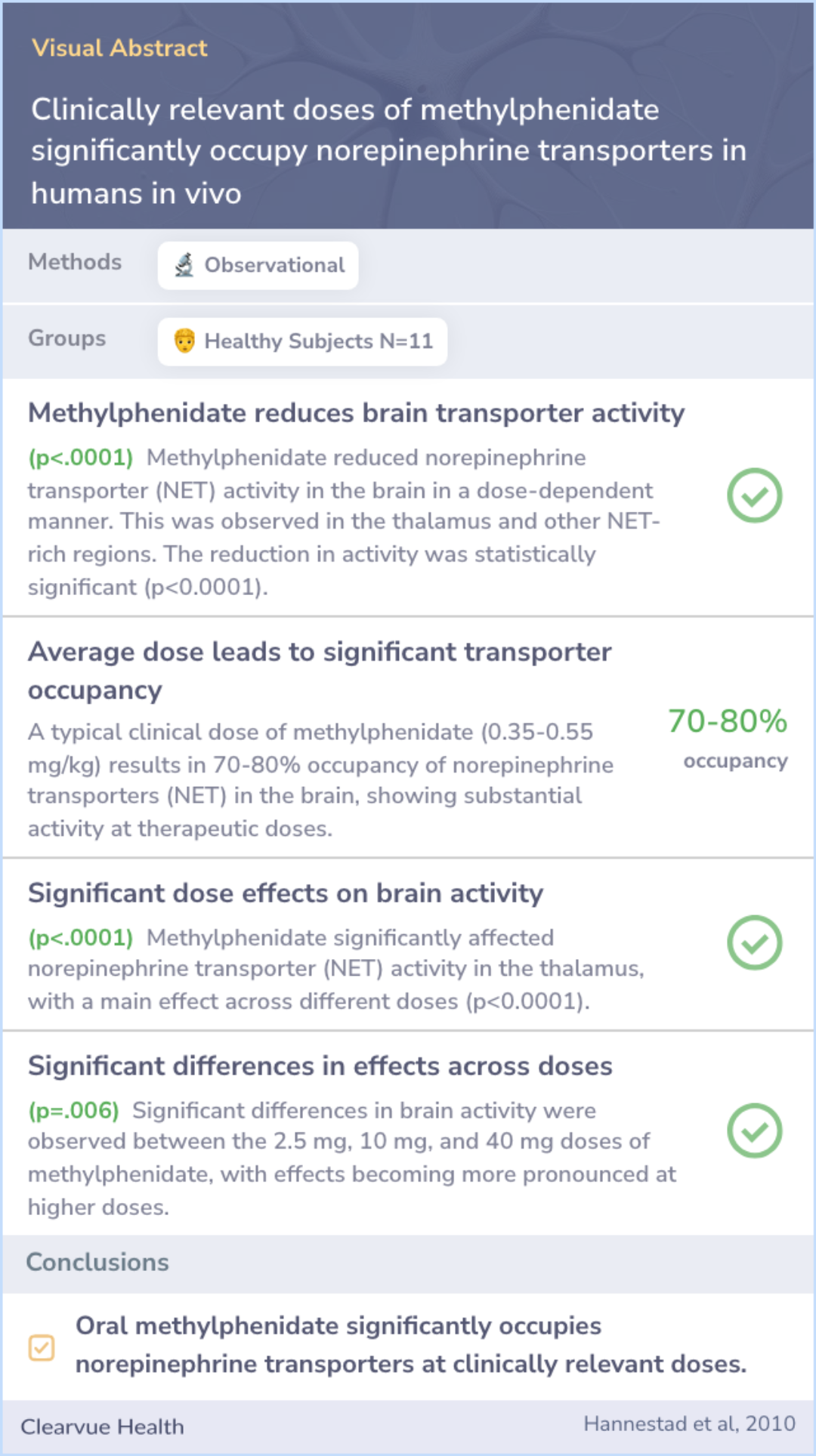
Study Summary
🔬
What They Studied
The main research question was to measure the occupancy of brain norepinephrine transporters by methylphenidate in humans using positron emission tomography.
💡
What They Found
The study found that methylphenidate significantly occupies norepinephrine transporters at clinically relevant doses, with an effective dose lower than that for dopamine transporters.
📚
What This Means
These findings show that methylphenidate (Ritalin) effectively targets norepinephrine transporters as it does dopamine transporters, aligning with current evidence regarding its action mechanism.
Study Summary
Study Overview
Researchers sought to better understand how methylphenidate (Ritalin) treats ADHD, particularly its interaction with norepinephrine transporters. Using advanced imaging, they studied how methylphenidate affects these transporters in real-time.The results suggest that Ritalin may work by both blocking dopamine and influencing norepinephrine, offering new insights into treatment. This dual-action approach could pave the way for more effective ADHD therapies.
Abstract: background
The goal of this study was to use positron emission tomography to measure the occupancy of brain norepinephrine transporter by methylphenidate in vivo in humans.

Understanding ADHD Treatment
"Our results suggest that the therapeutic effects of methylphenidate in ADHD may be mediated through NET inhibition, in addition to DAT inhibition."
Reevaluating Methylphenidate's Mechanism
"Although methylphenidate has been used for the treatment of ADHD for decades, the exact mechanism of action is unclear."
Exploring Norepinephrine's Role
"The potential role of norepinephrine is supported by animal and human data."
Study Summary
Methods
Eleven participants received different doses of methylphenidate (Ritalin) or a placebo, followed by PET scans. Researchers used [¹¹C] methylreboxetine to track norepinephrine transporter interaction.Imaging focused on norepinephrine-rich brain regions, and a specific model calculated how much tracer was displaced, helping to estimate the drug's binding potential.
Abstract: methods
We used (S,S)-[¹¹C] methylreboxetine ([¹¹C]MRB) to determine the effective dose 50 (ED₅₀) of methylphenidate for NET. In a within-subject design, healthy subjects (n = 11) received oral, single-blind placebo and 2.5, 10, and 40 mg of methylphenidate ...more

Study Summary
Results
Methylphenidate (Ritalin) reduced norepinephrine transporter binding in a dose-dependent manner, with an ED₅₀ of 0.14 mg/kg. Clinical doses of 0.35 to 0.55 mg/kg occupied 70% to 80% of these transporters, suggesting that standard doses provide significant transporter occupancy.These findings highlight the drug's effectiveness at typical clinical doses.
Abstract: results
BP(ND) was reduced by methylphenidate in a dose-dependent manner in thalamus and other NET-rich regions. The global ED₅₀ was estimated to be .14 mg/kg; therefore, the average clinical maintenance dose of methylphenidate (.35-.55 mg/kg) produces 70% t...more
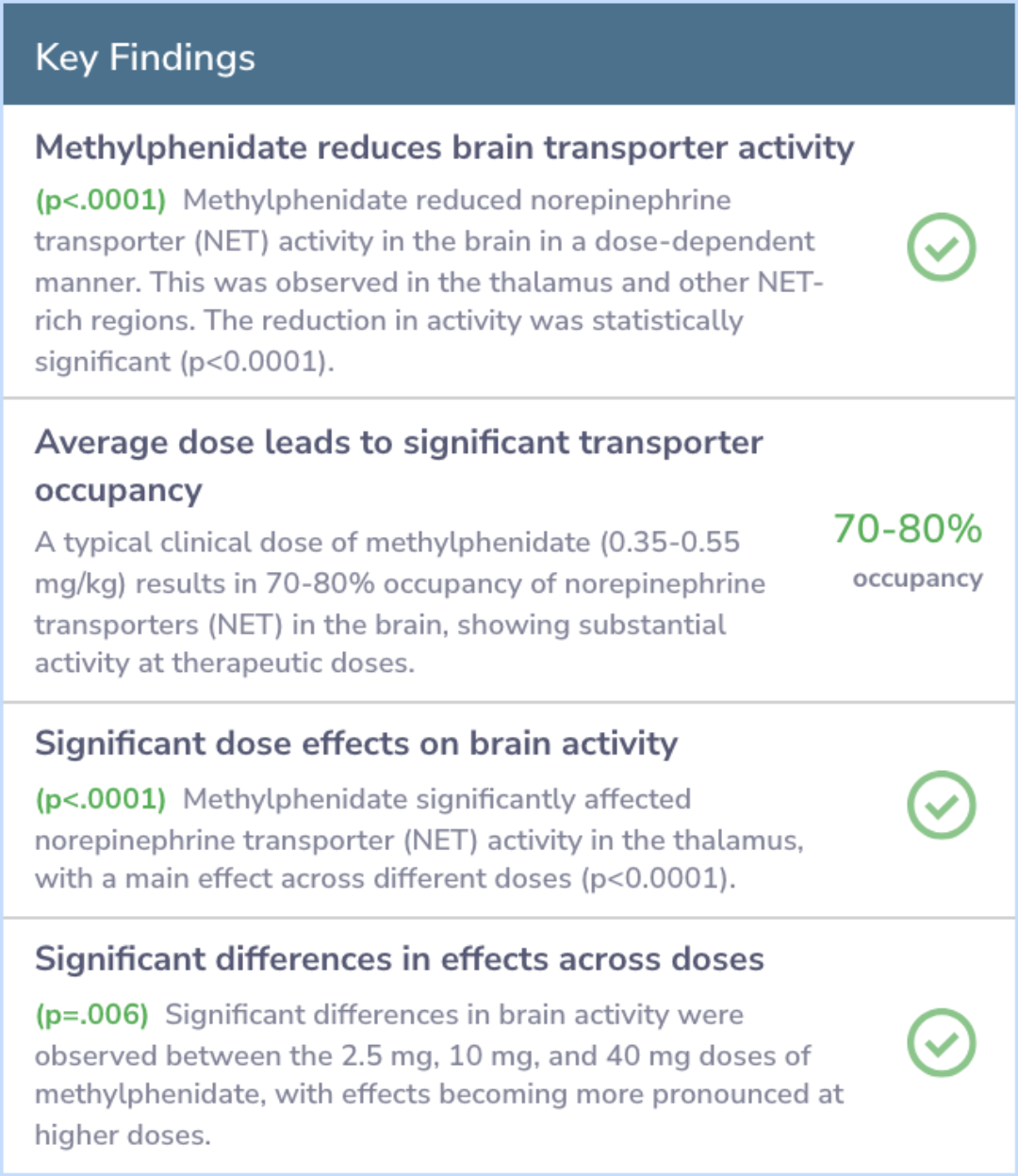
Study Summary
Conclusions
This study is the first to show that clinical doses of methylphenidate (Ritalin) significantly occupy norepinephrine transporters. The effective dose for norepinephrine transporters was lower than for dopamine transporters.These findings suggest that norepinephrine transporter inhibition plays a key role in the drug’s effects, offering new directions for ADHD treatment.
Abstract: conclusions
For the first time in humans, we demonstrate that oral methylphenidate significantly occupies NET at clinically relevant doses. The ED₅₀ is lower than that for DAT (.25 mg/kg), suggesting the potential relevance of NET inhibition in the therapeutic e...more
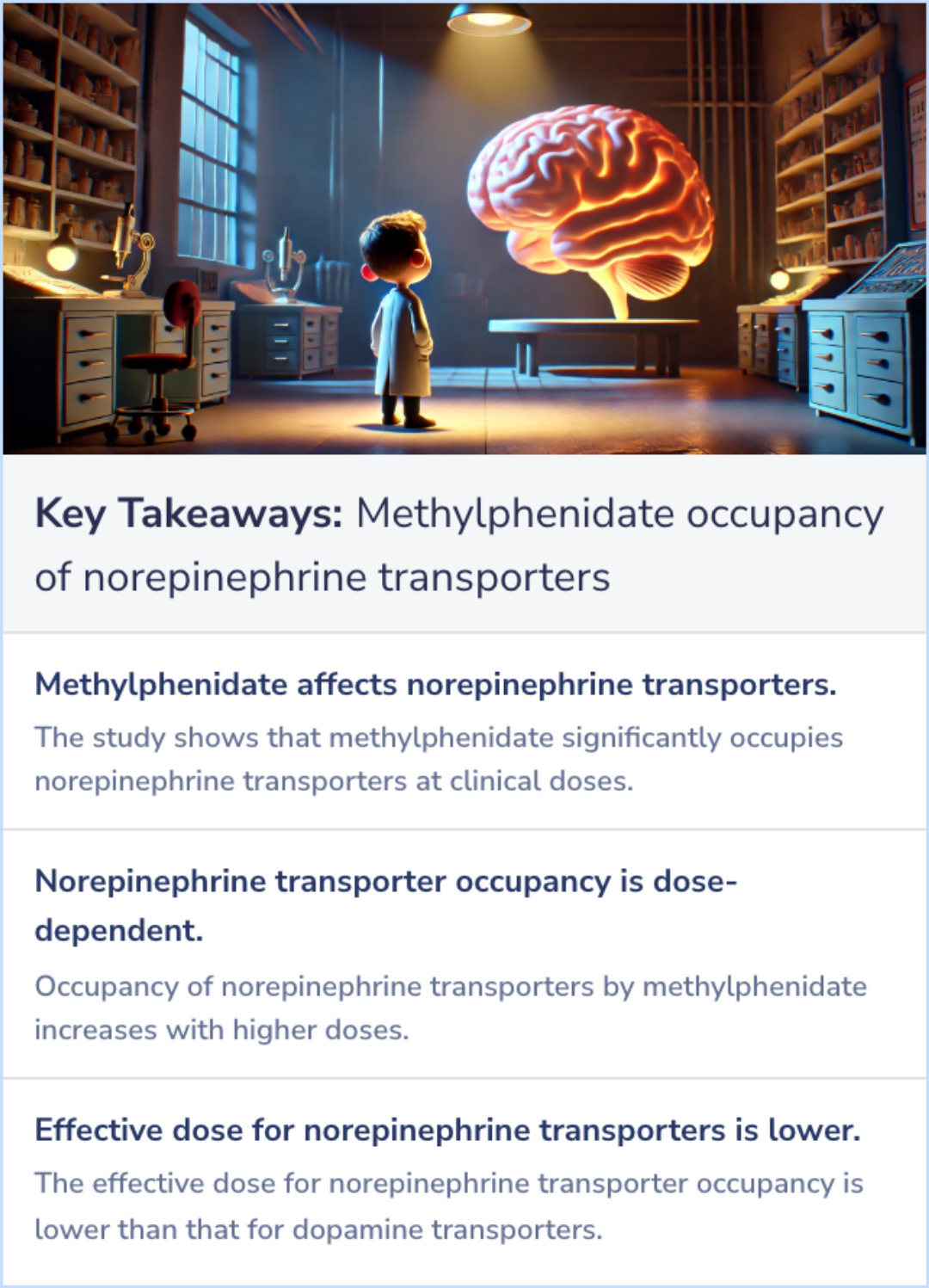
Background Information
Patient Guide
🧠
Methylphenidate Action
Blocks norepinephrine and dopamine reuptake, enhancing their levels in the synaptic cleft.
👨⚕️
Primary Uses
FDA-approved for ADHD treatment in children and adults, with additional off-label uses.
🔬
Neuroprotection Potential
May aid in neuroprotection for conditions like Parkinson's by regulating dopamine.
💊
Extended Formulations
Available as immediate-release, extended-release, and sustained-release to meet different patient needs.
👀
Required Monitoring
Regular checks for side effects such as cardiovascular issues, psychiatric reactions are mandatory.
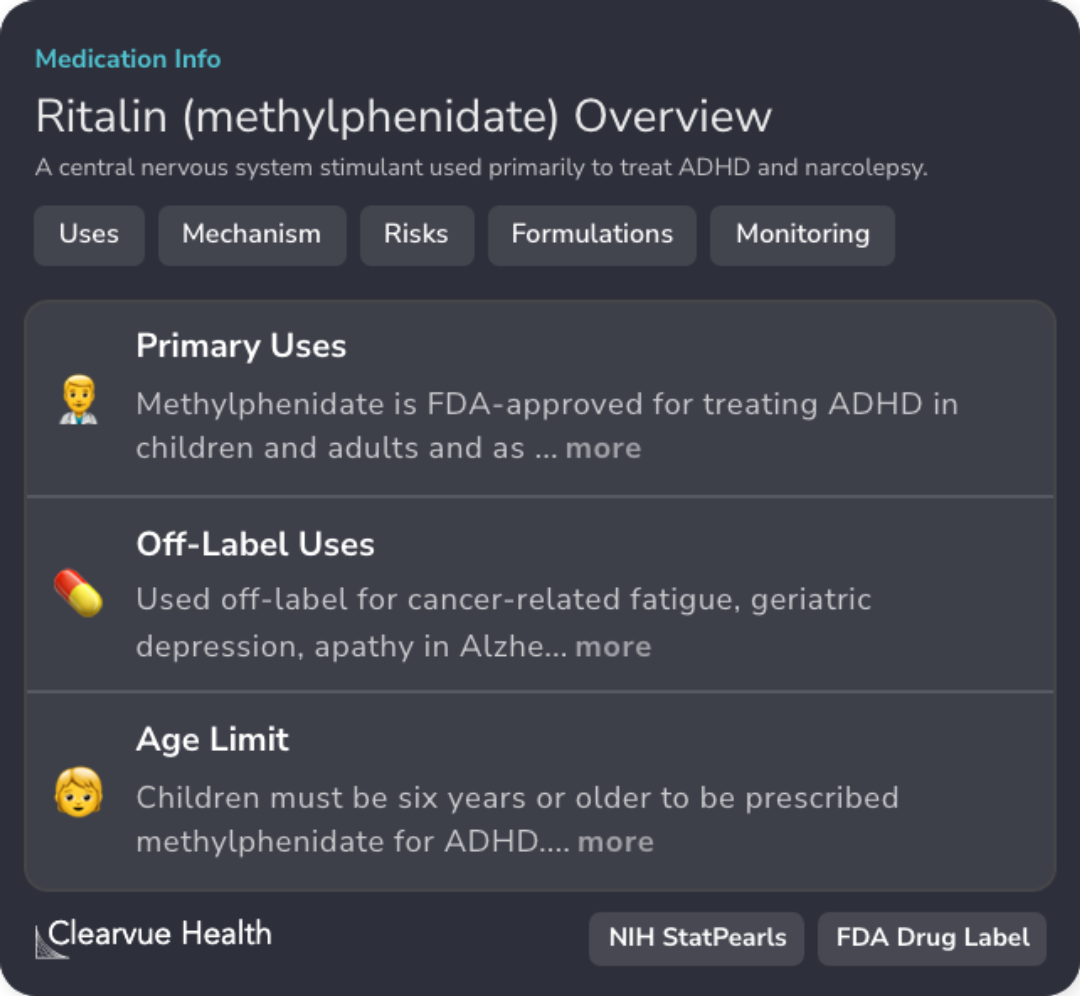
Professional Guide
Expert Opinion: Methylphenidate occupancy of norepinephrine transporters
Methylphenidate's occupancy of norepinephrine transporters (NET) holds significant clinical relevance. As the first-line treatment for preschool ADHD, methylphenidate has shown high effectiveness, with an effect size of 1.0.Stimulants like Ritalin reduce ADHD-related risks such as driving incidents in adolescents, although non-stimulants are less effective.
Evidence Summary
Methylphenidate and Working Memory Enhancement
Methylphenidate, often used to treat ADHD, has been found to enhance working memory. This improvement supports its use not just for ADHD, but also for aiding tasks that involve learning and problem-solving.
Studies show methylphenidate can significantly boost working memory, making it easier to manage complex tasks.
Working memory is key for tasks such as learning and solving problems, highlighting the broader benefits of methylphenidate.
Studies show methylphenidate can significantly boost working memory, making it easier to manage complex tasks.
Working memory is key for tasks such as learning and solving problems, highlighting the broader benefits of methylphenidate.
Evidence Summary
Methylphenidate's Impact on Cognitive Abilities in Children
Methylphenidate, commonly known for treating ADHD in children, has varied effects on cognitive functions. It enhances attention and focus but also presents potential side effects on behavior and learning abilities. Exploring these dual outcomes helps us understand the medication's broader impact.
Understanding how this medication influences behavior and cognitive abilities can guide its effective use and address potential challenges in ADHD treatment.
Understanding how this medication influences behavior and cognitive abilities can guide its effective use and address potential challenges in ADHD treatment.
Evidence Summary
Effects on Brain Activity Related to Attention
This content illustrates how a medication used for ADHD impacts brain activity involved in attention. Advanced imaging techniques reveal how the medication alters activity in specific brain regions tied to focus.
The discussion centers on the medication’s influence on neural activity related to attention. Observations from these studies highlight changes in brain regions responsible for attention processes.
The discussion centers on the medication’s influence on neural activity related to attention. Observations from these studies highlight changes in brain regions responsible for attention processes.
